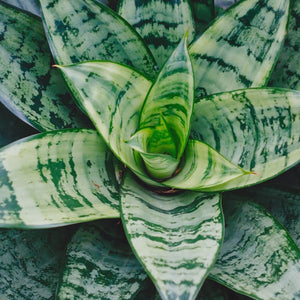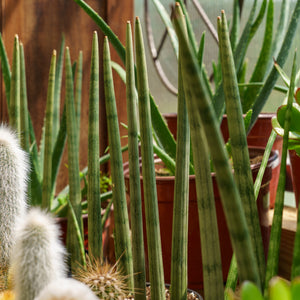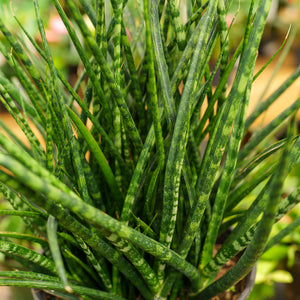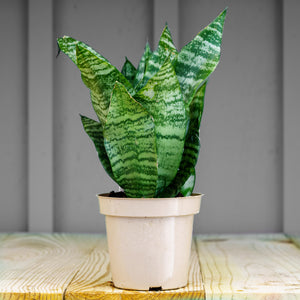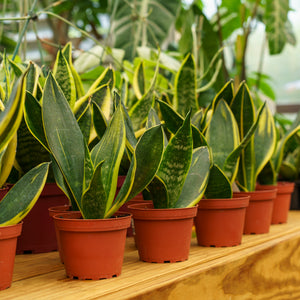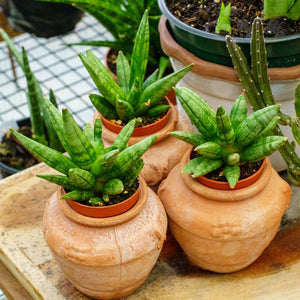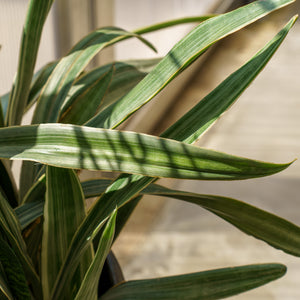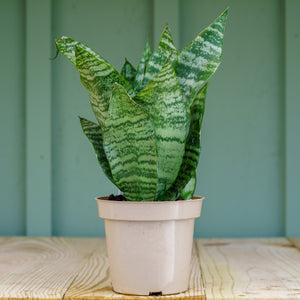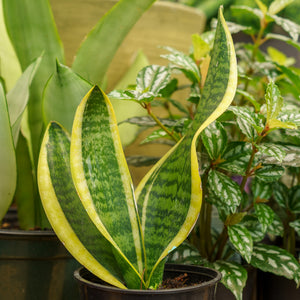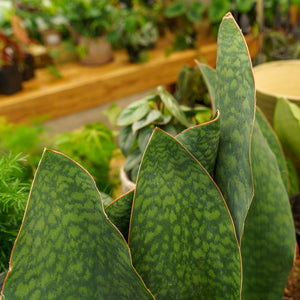The Sansevieria Guide
Sansevieria, commonly known as snake plant or mother-in-law's tongue, brings a touch of modern elegance and resilience to any garden or indoor space. With their striking, upright leaves and minimal care requirements, Sansevieria plants are perfect for adding an eye-catching focal point to containers, garden beds, and interior decor. These plants thrive in a variety of conditions and require minimal maintenance, making them an excellent choice for enhancing indoor plant collections, creating low-maintenance garden displays, or adding unique elements to your space. Explore our Sansevieria Guide to learn more about cultivating and caring for these fascinating plants, and discover how to incorporate them into your garden or indoor spaces for lasting beauty and enjoyment.
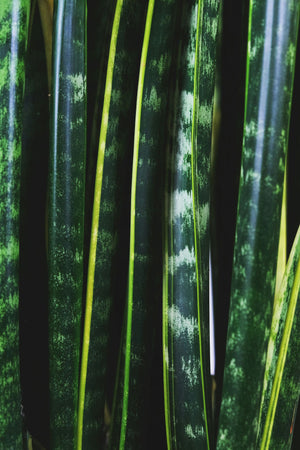
About
Sansevieria is a genus of flowering plants in the Asparagaceae family, native to tropical and subtropical regions of Africa, Madagascar, and southern Asia. The genus includes around 70 species, known for their tough, sword-like leaves that grow vertically from a basal rosette. The leaves are typically green, but many species feature striking variegation with patterns of silver, yellow, or white. The plants are named after Raimondo di Sangro, Prince of Sansevero, an 18th-century Italian scholar.
One of the most popular species is Sansevieria trifasciata, commonly known as snake plant or mother-in-law's tongue. This species is prized for its tall, upright leaves that can reach up to several feet in height. Another favorite is Sansevieria cylindrica, also known as cylindrical snake plant, which features round, tubular leaves that can be braided or left to grow naturally.
Sansevieria plants are highly valued for their air-purifying qualities. They are known to filter toxins such as formaldehyde, benzene, trichloroethylene, xylene, and toluene from the air, making them an excellent choice for improving indoor air quality. Additionally, Sansevieria is one of the few plants that can convert carbon dioxide into oxygen at night, making them ideal for bedrooms.
These plants are extremely resilient and adaptable, capable of thriving in a wide range of light conditions, from low light to bright, indirect light. Their drought tolerance and ability to withstand neglect make them perfect for busy gardeners or those new to plant care.
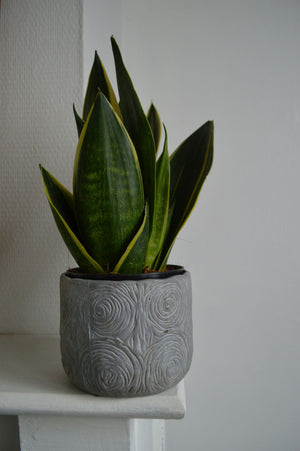
Planting
Creating the right environment is key to the success of your Sansevieria. Follow these guidelines to ensure healthy growth:
- Soil: Sansevieria prefers a well-draining soil mix. A cactus or succulent potting mix works well for these plants. You can also create your own mix by combining regular potting soil with sand or perlite to improve drainage.
- Light: Sansevieria thrives in bright, indirect light but can tolerate low light conditions. While they can adapt to various light levels, their growth will be more vigorous with more light. Avoid direct sunlight, which can scorch the leaves, especially for indoor plants.
- Watering: Sansevieria requires minimal watering. Allow the soil to dry out completely between waterings. Overwatering can lead to root rot, so it's important to err on the side of underwatering. Reduce watering in the winter months when the plant's growth slows down.
- Humidity: Sansevieria plants are not particular about humidity and can thrive in both low and moderate humidity levels. They are well-suited to the average indoor environment.
- Temperature: Sansevieria thrives in warm temperatures between 70-90°F (21-32°C) but can tolerate temperatures as low as 50°F (10°C). Protect the plant from frost and sudden temperature drops, which can cause damage to the leaves.
- Containers: Choose a pot with drainage holes to prevent waterlogging. Ensure the container is large enough to accommodate the plant's root system and allows for growth. Sansevieria can tolerate being root-bound, so repotting is only necessary every 2-3 years.
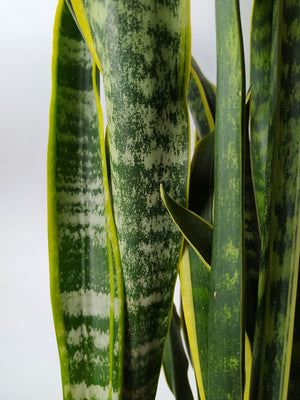
Care
Proper care ensures that your Sansevieria remains healthy and vibrant, producing stunning foliage year-round.
- Watering: Allow the soil to dry out completely between waterings. Water the plant thoroughly, but ensure excess water drains away. In the winter months, reduce watering to once every 4-6 weeks, as the plant's growth slows down. Avoid using hard water, which can cause leaf spots.
- Fertilizing: Sansevieria benefits from occasional feeding during the growing season. Use a balanced, water-soluble fertilizer diluted to half strength once a month from spring through summer. Avoid over-fertilizing, as this can lead to salt buildup and damage the plant.
- Pruning: Remove any yellow or damaged leaves to maintain the plant's appearance and health. Use clean, sharp scissors to avoid introducing infections. Prune back the tips of the leaves if they become too long or damaged.
- Pests and Diseases: Sansevieria is relatively pest-resistant but can occasionally be affected by spider mites, mealybugs, and scale insects. Inspect your plants regularly and treat any infestations promptly with appropriate organic or chemical controls. Maintain proper watering and avoid overwatering to reduce the risk of root rot and fungal diseases.
- Repotting: Repot Sansevieria every 2-3 years or when it outgrows its current container. Spring is the best time to repot. Use fresh potting mix and ensure the new pot has adequate drainage. Sansevieria can tolerate being slightly root-bound, so don't rush to repot unless necessary.
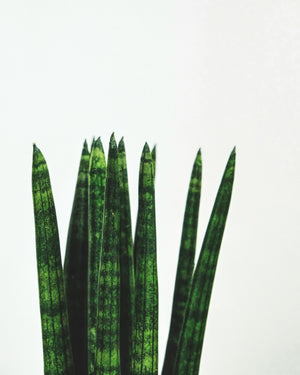
How To Use
Sansevieria offers versatility and can be utilized in various ways to enhance your indoor and garden spaces. Consider these creative uses:
- Indoor Decor: Sansevieria makes stunning houseplants, adding a touch of modern elegance to any room. Place them in bright, indirect light and use decorative pots to enhance their appearance. Their upright, architectural leaves make them a striking focal point in any interior setting.
- Office Plants: Sansevieria's ability to thrive in low light makes them ideal for office environments. Place them on desks, shelves, or in corners to bring a touch of nature to the workspace. Their air-purifying properties also help improve indoor air quality.
- Hanging Baskets: Smaller Sansevieria species or varieties with trailing habits can be grown in hanging baskets to create cascading displays of foliage. This is an excellent way to add visual interest to your indoor or outdoor spaces.
- Living Walls: Use Sansevieria to create living wall displays. Plant them in vertical planters or frames to add a unique, textural element to indoor or outdoor walls. Their upright habit and striking leaves can enhance the visual appeal of vertical gardens.
- Patios and Balconies: Grow Sansevieria in containers to create portable displays for patios, balconies, or entryways. Use decorative pots to enhance their sculptural forms and arrange them in groupings for added impact.
- Ground Cover: In warm climates, Sansevieria can be used as a ground cover in garden beds. Their dense foliage helps suppress weeds and retain soil moisture. However, ensure they are not exposed to frost or cold temperatures.
- Public Spaces: Sansevieria is often used in public spaces like hotel lobbies, restaurants, and office buildings to create a modern, inviting atmosphere. Their low maintenance requirements and striking appearance make them ideal for such settings.
Conclusion
Sansevieria is a captivating and versatile addition to any garden or indoor space. With their striking, upright leaves, low maintenance requirements, and air-purifying qualities, Sansevieria plants bring a touch of modern elegance to your environment. Their adaptability to various growing conditions and ease of care make them a favorite among gardeners and indoor plant enthusiasts of all levels. By following proper planting and maintenance techniques, you can fully harness the potential of Sansevieria to enhance your garden and home, creating a lasting impact.
Whether you seek to create stunning indoor displays, enhance your patio garden, or add visual interest to living walls and containers, Sansevieria can fulfill a variety of roles in your landscape and decor. Place them individually to showcase their unique beauty, or combine different species and varieties for a dynamic and visually appealing display. Sansevieria's ability to thrive in diverse environments and provide year-round interest adds to their appeal, making them a valuable addition to any collection.
Beyond their ornamental value, Sansevieria contributes to the overall health and beauty of your garden ecosystem by providing habitat for beneficial insects and adding structure to your landscape. Their low maintenance requirements and resilience make them an excellent choice for sustainable gardening. With their enduring beauty, versatility, and ecological benefits, Sansevieria plants bring natural allure and vibrant charm to your outdoor and indoor environments, enriching your plant collection and enhancing the overall beauty of your space.

